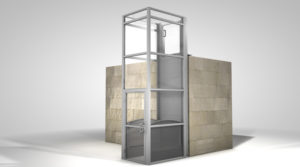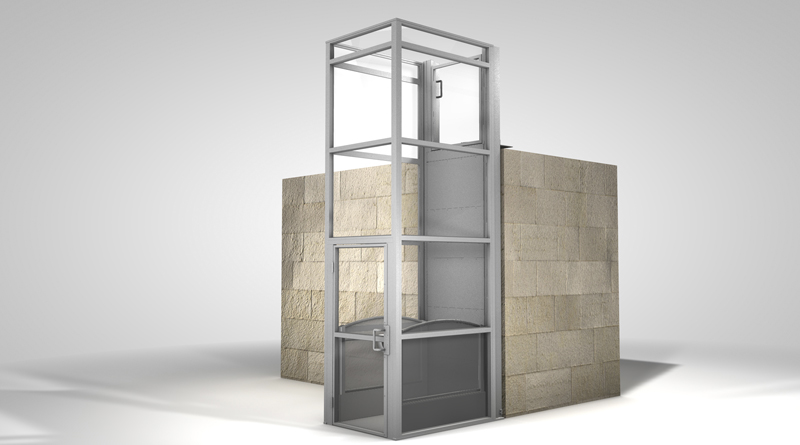Quiet, Dignified Lifts for Schools and Universities
By Jay Goodspeed
One challenge for K-12 and university facility managers tasked with meeting Americans with Disabilities Act (ADA) requirements has been offering full access to elevated areas on campuses. Common campus areas such as theaters, auditoriums, libraries, administrative offices and student centers — especially those with a second floor or mezzanine level not served by an elevator — can prove particularly challenging.
Although traditional wheelchair lifts are available to assist those with mobility issues, most are limited to a 60-inch or less maximum vertical lift height. This is sufficient for a stage, but not for a second floor.

Photo Credit: Ascension Lift
Installing a one-floor elevator is also an option, but can be costly and usually requires overhead clearance for a machine room as well as demolition to flooring to install machinery below. For these reasons, a dedicated elevator that only goes up one floor is generally not feasible unless access to multiple floors is required.
Fortunately, the industry now offers ADA compliant wheelchair lifts that offer extended vertical reach up to 14 feet with minimal installation requirements. Even with this category, however, there can be drawbacks. For this reason it is important for school facility personnel responsible for purchasing this type of equipment to carefully review the options available. For example, many extended rise wheelchair lifts require up to 6 inches of machinery underneath, and in turn require demolition of the floor. The alternative is for the unit to be raised above the floor, which then requires a flip-down ramp that makes entry more difficult. If you are a school facility that is looking for recommendations on what type of lifts to get, then you could always check out something like these Terry Lifts to give you a better idea of what else is out there.
Some lift machine cabinets are also relatively enclosed by sheet metal, which can be a problem for individuals who experience claustrophobia. Finally, some lifts operate with screw or worm gear drives that can be very noisy and disruptive. The devices often generate a loud, grinding sound similar to a high-speed drill or trash compactor, which can detract from the educational environment.
Today, however, there are options that can reach second floors or mezzanines that are much quieter, less enclosed and require little to no renovation of existing structures. Unlike wheelchair lifts that use lead screw or worm gear drives, these more advanced lifts feature an electro hydraulic drivetrain and vibration isolating supports, which significantly reduce noise. When rising, for instance, the unit is about as loud as normal conversation and it is virtually silent when descending.
Since these lift styles mount directly to the floor with a platform that measures just 1/2-inch thick, an individual using a wheelchair or an assistive device can safely enter without a flip-down entry ramp. For tight renovation spaces, narrow profile lifts allow the extended lift to fit into existing structures without tearing down walls to make space. Enclosures designed with transparent panels also leave at least three sides clear for better sight lines and more comfort. Another safety feature included with such systems is an ADA-compliant hands-free phone with auto dialer for two-way communication from the platform.
As educators look to achieve ADA compliance and meet the needs of all students, extended rise wheelchair lifts will help them to safely meet access requirements in a dignified manner for a wider range of structures and facilities.
Jay Goodspeed is assistant sales manage for Ascension Lift, a wheelchair lift manufacturer based in Tucson, Ariz. The company offers the Clarity 16E, an ADA compliant lift that offers extended vertical rises to second floors or mezzanines.

